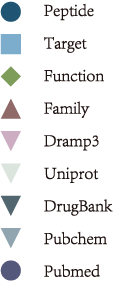(3S,6R,9S,12R,15S,18R)-3-Butyl-6,12,15,18-Tetraisopropyl-4,10,16-Trimethyl-9-Sec-Butyl-1,7,13-Trioxa-4,10,16-Triazacyclooctadecane-2,5,8,11,14,17-Hexone
Basic information
| CPKB ID | CP01091 |
| IUPAC Name | (3S,6R,9S,12R,15S,18R)-3-butan-2-yl-15-butyl-4,10,16-trimethyl-6,9,12,18-tetra(propan-2-yl)-1,7,13-trioxa-4,10,16-triazacyclooctadecane-2,5,8,11,14,17-hexone |
| Synonyms | |
| Source |
Fusarium equiseti [Division : Plants and Fungi]
Taxonomy :61235 (Fungi-Ascomycota-Hypocreales-Sordariomycetes-Nectriaceae Fusarium) Wikipedia: Fusarium equiseti PubChem |
| Function |
Anti-Bacterial Anti-Fungal Enzyme inhibitor Immunomodulatory PubChem |
| Information |
(3S,6R,9S,12R,15S,18R)-3-butyl-6,12,15,18-tetraisopropyl-4,10,16-trimethyl-9-sec-butyl-1,7,13-trioxa-4,10,16-triazacyclooctadecane-2,5,8,11,14,17-hexone is a natural product found in Fusarium equiseti with data available. |
Legend

Structure
| Molecular Formula |
C35H61N3O9 |
| Molecular Weight | 667.4407805 g/mol |
| SMILES | CCCC[C@H]1C(=O)O[C@H](C(C)C)C(=O)N(C)[C@@H](C(C)C)C(=O)O[C@H](C(C)C)C(=O)N(C)[C@@H]([C@H](C)CC)C(=O)O[C@H](C(C)C)C(=O)N1C |
| InChI | InChI=1S/C35H61N3O9/c1-15-17-18-24-33(42)45-28(21(7)8)31(40)37(13)25(19(3)4)34(43)46-29(22(9)10)32(41)38(14)26(23(11)16-2)35(44)47-27(20(5)6)30(39)36(24)12/h19-29H,15-18H2,1-14H3/t23?,24-,25-,26-,27+,28+,29+/m0/s1 |
| InChIKey | VGOLHAPJYMAXRH-FMVKODOJNA-N |
|
2D Structure
PubChem|16727692
|
|
|---|---|
|
3D Structure
PubChem|16727692
|
|
Sequence
| IUPAC Condensed | cyclo[N(Me)Nle-D-OVal-N(Me)Val-D-OVal-N(Me)xiIle-D-OVal] |
| Amino acid chain | N(Me)Nle(1)--D-OVal--N(Me)Val--D-OVal--N(Me)xiIle--D-OVal(1) |
| Graph representation | N(Me)Nle,D-OVal,N(Me)Val,D-OVal,N(Me)xiIle,D-OVal @0,5 |
| Amino acid chain from Structure | Ac-Val(1)--NMe-NAc-Ile--NFo-D-Abu(1) |
| svg Image |
Structure Properties
| Property Name | Property Value | |
|---|---|---|
| Exact Mass | 667.4407805 | |
| Number of Rings | 1.0 | |
| Complexity | 0.531914894 | |
| XlogP3 AA | 4.0767 | |
| Heavy Atom Count | 47.0 | |
| Hydrogen Bond Donor Count | 0.0 | |
| Hydrogen Bond Acceptor Count | 9.0 | |
| Rotatable Bond Count | 9.0 |
| Property Name | Property Value | |
|---|---|---|
| Formal Charge | 0.0 | |
| Refractivity | 177.646 | |
| Rule_of_Five | 0.0 | |
| Number of Atoms | 47.0 | |
| Topological Polar Surface Area | 139.83 | |
| Refractivity | 177.646 | |
| Veber Rule | 1.0 | |
| Ghose Filter | 0.0 |
| Property Name | Property Value | |
|---|---|---|
| RDKit Fingerprint |
00100001000010110100110101110001100000000001100000111000100101010100001110001100000100000010010011000101000001111001001001110100010000100010000000011101100010010000001110010110110111000111000101001110001111001000100101001010000011000100001101000000010001001110010100001000000000100001001100000111010000011100100110000110110100110000000011010000000001100011101000100010001000000000010001100001000100000010000100001110001000110000100100111001101100001000000100000010010110000000010000001000000100011100010000100100000101110010010000000100100001010000100010001110001101011000010001101000000000000100111000100000000010010010010000001111000100100000000100101111010000000000000000100001011001000100011100101000000111100000010000100010001001000101000100010010001100100011001110010000000001011001000010010000001100101000000100110000110001000000101010000110000000001011100000000001000100100010111001001010110000111001110101000111001010110110000001010001100000001000011001010000011000110011000000010000010100010010010000000000001110000001000100010011110000100100010000110100001010000001000000000000110000001001001001000010000000110000000100001000000100000100101001101000101010101100101101010001010000010011000101100000010001000000011011100000011101000010011011000010000000001100010000110000100010000011110001101001010011100101000001001101000010000001111000101000010101110011000000101110100000000010011100100111100001001111110010100001100011100010000010000100001010110011010100000100010011001001001000000101010100000000110010111010000000010000000000010100001100100100010000000001101100110110001100001001100010001001000001000011110000001010111000100010010000010010010100001100000000000100000010011000010001010000011100000000100000000010000111100000101000100011101000010000000001010110101010001100000000010000000010001011110101000100001011011010010010010100000001000100000000000000010001000000010100011000010100101111101100001010010000000101000000010001011100010000010010111111000011000001001101110010100001001000000100010010000101000001100000001111100001011001 |
|
| Morgan Fingerprint |
0100010000000000000000000000000001000000001000000000000000000000000000000000000010000000000000100000000000000000000000000100000000000000000000000000000000000000000000010000000000000000000000000000000000000010000000000001000000000000000000000000000000000100000000000000000000000000000100000000001000000000000000000010000000000000000000000000000000000000000010000000000000100000000000000000000000000000000000000000000000000000000000000000000000000000000000000000000000000000000000000000001000000000100000000000000000000000100000000000100000000000000000001000000000000000000000000000000000000001000000000000000001000000000000000000010000000000000000000010000010000000000001000001000000000000000000100000000000000000000000000000000001000000000000000000001000000000000000000000000000001001001000000010000000000000000000000000000000000000100000000000000000000000000000000000000000000010000000010000000000000000000000000000000000000000000000010000010000000000000000000000000000000000000000000000000000000000000000000000000000010000 |
|
| MACCS Keys |
00000000000000000000000000000000000000000000000000000000010000000000000010110000000001000000110100000000000010110011111011110001000000001100111100111110101111111100110 |
Biologic Description
Toxicity PubChem|16727692
Enniatins are toxic due to their ability to act as ionophores, changing ion transport across membranes and disrupting the ionic selectivity of cell walls. In the membrane, enniatins form a dimeric structure and are able to transport monovalent ions (especially K+, Mg2+,Ca2+ and Na+) across the membranes. This effect is particularly harmful in mitochondrial membranes, resulting in the uncoupling of oxidative phosphorylation. They are also know to inhibit several enzymes, including acyl coenzyme A:cholesterol acyltransferase and cyclic nucleotide phosphodiesterase. Enniatins are cytotoxic and can cause DNA fragmentation, induce apoptosis, and disrupt the ERK signalling pathway. They can also inhibit the activity of membrane-located ATP-binding cassette (ABC) transporters, multidrug pumps which affect the bioavailability of xenobiotics and pharmaceuticals. (A3055, A3056, A3057)
Manufacturers
| Manufacturers Name | Value | |
|---|---|---|
| CreativePeptides | ||
| Bayer healthcare pharmaceuticals | ||
| Upsher smith laboratories | ||
| Merck |
| Manufacturers Name | Value | |
|---|---|---|
| Apotex | ||
| Baxter Healthcare Corp | ||
| Pharmasources | ||
| Novartis | ||
| AstraZeneca |
Forecasting tools
| Forecasting tools | Value | |
|---|---|---|
| Structure to Sequence | ||
| Structure Properties | ||
| Expasy ProtParam Tool | ||
| SEA | RUN SEA Predictions |
Information Source
| Property Name | Property ID | |
|---|---|---|
| Patents | VGOLHAPJYMAXRH-FMVKODOJNA-N | |
| pubchem | 16727692 | |
| Drugbank | ||
| DRAMP3 | ||
| Uniprot | ||
| Cybase | ||
| CONOSERVER | ||
| BindingDB | ||
| CHEMBL | CHEMBL450707 | |
| CTD | ||
| Wikipedia | ||
| KEGG Compound/Drug | ||
| CHEBI | VGOLHAPJYMAXRH-FMVKODOJNA-N | |
| EPA DSSTox | ||
| FDA Global Substance Registration System (GSRS) | ||
| DTP/NCI | ||
| Chemspider | VGOLHAPJYMAXRH-FMVKODOJNA-N |
Reference
| Pubmed_ID | Title | DOI | Journal | |
|---|---|---|---|---|
6151906 |
10.1055/s-0029-1210385. | Exp Clin Endocrinol |
||
Urinary excretion of free catecholamines in long-term treatment with dopaminergic agonistsAbstract
|
||||
